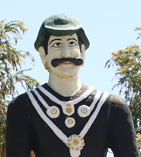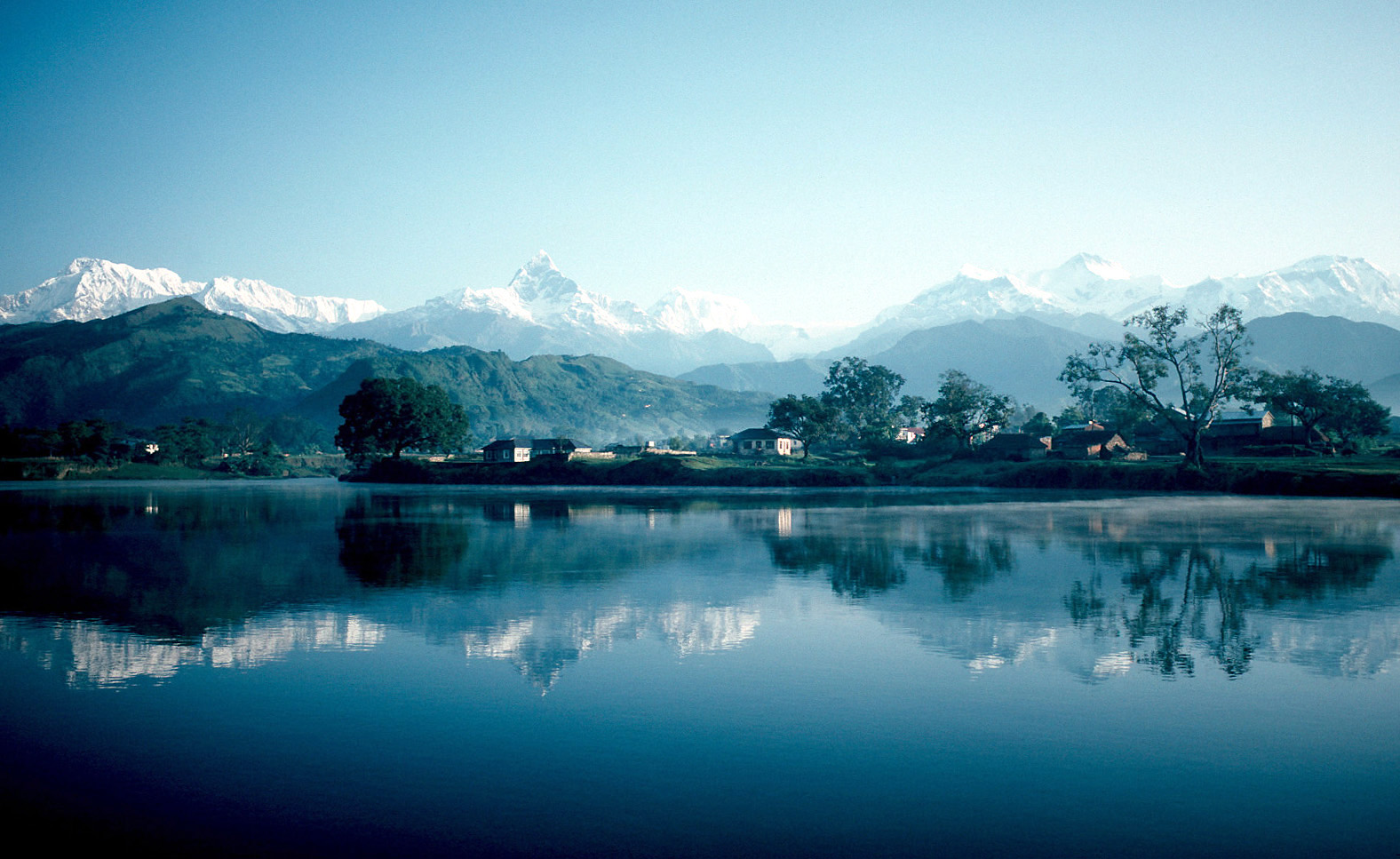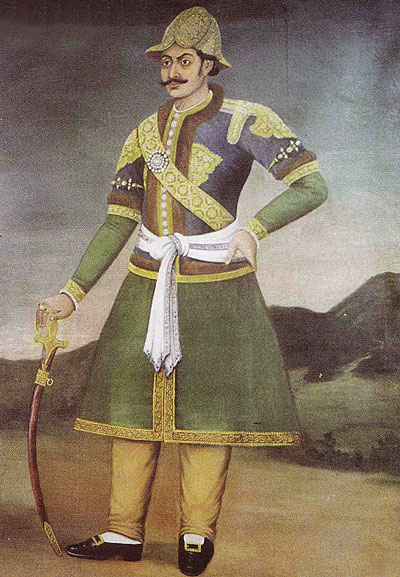|
Amar Singh Thapa
Amar Singh Thapa Chhetri distinguished as Badakaji Amar Singh Thapa( ne, बडाकाजी अमर सिंह थापा क्षेत्री), or Amar Singh Thapa The Elder, (also spelled Ambar Simha) also known by the honorific name Bada Kaji ("Senior Kaji") or Budha Kaji ("The Old Kaji"), was a Gorkhali military general, governor and warlord in the Kingdom of Nepal. He was the overall commander of the Nepal Army in the conquest of Western Provinces and authoritative ruler of Kumaon, Garhwal in the Kingdom of Nepal. He was referred by the King of Nepal to have been deployed as Mukhtiyar (equivalent to Prime Minister) of Western Provinces of Kumaon, Garhwal He is often hailed as Living Tiger of Nepal ( ne, ज्यूँदो बाघ; ''jyūm̐do bāgha'') and he was posthumously regarded as one of the national heroes of Nepal, who led the Anglo-Nepalese War for the Gorkhali Army. Amarsingh Chowk Pokhara and Shree Amarsingh Model Higher Secondary School are n ... [...More Info...] [...Related Items...] OR: [Wikipedia] [Google] [Baidu] |
Family Of Amar Singh Thapa
The family of ''Badakaji'' Amar Singh Thapa (1751 - 1816) was a noble Chhetri family in the central politics of Kingdom of Nepal as well as former military aristocracy of Gorkha Kingdom. The family of Bhimsen Thapa and the family of Amar Singh Thapa were two Bagale Thapa families and part of larger Thapa caucus at the central politics of the Kingdom of Nepal. The patriarch of this family is Ranjai Thapa of Siranchowk whose son ''Bagh'' Bhim Singh Thapa became a military commander of Gorkha Kingdom and died in the battle of Palanchowk. Bhim Singh's son and the most prominent member of this family, Amar Singh Thapa went on to become overall commander (in capacity of Mukhtiyar) of Kumaon, Garhwal and its West region in the Kingdom of Nepal. Amar Singh's sons and grandsons were influential Bharadars (state-bearing officers), politicians, ministers and military commanders in the Kingdom of Nepal. The family was also maritally connected with Kunwar family of Gorkha. Amar Singh Thapa was ... [...More Info...] [...Related Items...] OR: [Wikipedia] [Google] [Baidu] |
Kaji (Nepal)
''Kaji'' ( ne, काजी) was a title and position used by nobility of Gorkha Kingdom (1559–1768) and Kingdom of Nepal between 1768 and 1846. Many other contemporary kingdoms used the same title for their ministers. Etymology Historian Mahesh Chandra Regmi suggests that ''Kaji'' is derived from Sanskrit word ''Karyi'' which meant functionary. History Ganesh Pande was the first Kaji under King Dravya Shah of Gorkha Kingdom. He helped Dravya Shah to become King of Gorkha and was later appointed Kaji of Gorkha in 1559 A.D. Another significant Kaji of Gorkha was Kalu Pande born in the family of Ganesh Pande. He was son of Bhimraj Pande who was also a Kaji during the reign of King Nara Bhupal Shah. Kalu Pande led Gorkhalis in the Battle of Kirtipur. He had set up a base on Naikap, a hill on the valley's western rim, from where they were to mount their assaults on Kirtipur. He was killed in the battle after being surrounded by enemy forces. The ministers and officials of Kantipur ... [...More Info...] [...Related Items...] OR: [Wikipedia] [Google] [Baidu] |
Kingdom Of Nepal
The Kingdom of Nepal ( ne, नेपाल अधिराज्य), also known as the Gorkha Empire ( ne, गोरखा अधिराज्य) or Asal Hindustan ( ne, असल हिन्दुस्तान)(), was a Hindu kingdom in South Asia, formed in 1768, by the unification of Nepal. Founded by King Prithvi Narayan Shah, a Gorkha monarch who claimed to be of Khas Thakuri origin, it existed for 240 years until the abolition of the Nepalese monarchy in 2008. During this period, Nepal was formally under the rule of the Shah dynasty, which exercised varying degrees of power during the kingdom's existence. After the invasion of Tibet and plundering of Digarcha by Nepali forces under Prince Regent Bahadur Shah in 1792, the Dalai Lama and Chinese Ambans reported to the Chinese administration for military support. The Chinese and Tibetan forces under Fuk'anggan attacked Nepal but went for negotiations after failure at Nuwakot. ''Mulkaji'' Damodar Pande, who w ... [...More Info...] [...Related Items...] OR: [Wikipedia] [Google] [Baidu] |
Kumar Pradhan
Kumar Pradhan ( 7 May 1937 – 20 December 2013) was an Indian historian and writer whose research interests include the History of the Eastern Himalayas, Genealogical studies and the Nepali literature. Pradhan has also edited and written a number of literary journals and anthologies and published learned articles in Nepali. He was the chief editor of Sunchari Samachar and other prominent Nepali newspapers. Early life and education Pradhan was born on 7 May 1937 at Kurseong in the Darjeeling district of West Bengal. He started his schooling at Ramkrishna Vidyalaya, St Alphonsus Missionary School Darjeeling, Govt College Darjeeling and completed his master's degree in History from Calcutta University in Kolkata. He received his PhD in history from Calcutta University Career Pradhan started his career as a teacher from St Robert's High School Darjeeling and became the lecturer in the history department of Darjeeling Government College and finally made the Principal of Kurseon ... [...More Info...] [...Related Items...] OR: [Wikipedia] [Google] [Baidu] |
Umrao
Amrabad ( fa, عمراباد, also Romanized as ‘Amrābād; also known as ‘Amrūābād and Umrāo) is a village in Dehaj Rural District, Dehaj District, Shahr-e Babak County, Kerman Province, Iran Iran, officially the Islamic Republic of Iran, and also called Persia, is a country located in Western Asia. It is bordered by Iraq and Turkey to the west, by Azerbaijan and Armenia to the northwest, by the Caspian Sea and Turkmeni .... At the 2006 census, its population was 110, in 27 families. References Populated places in Shahr-e Babak County {{ShahrBabak-geo-stub ... [...More Info...] [...Related Items...] OR: [Wikipedia] [Google] [Baidu] |
Shree Amarsingh Model Higher Secondary School
Shree Amarsingh Secondary School (''referred to as AMSS'') (Nepali: श्री अमरसिँह माध्यमिक विद्यालय) is a secondary school opened from amount collected from post war reconstruction fund established after World War as Soldier's Board Vocational Training High School on March 26, 1957. After 10 years it was handed over to Government of Nepal on September 14, 1966 and renamed to its present name. Introduction Braille medium (established : 1981 A.D), English medium (established : 1985 A.D) and Plus-two stream (established 1999 A.D) are the sections of this institution.Plus two level is affiliated to HSEB (Higher Secondary Education Board) while school level is under Government of Nepal. The school was awarded as Model Higher Secondary School in 2004 A.D, Best National in 2006 A.D, Regional Best Community Higher School in 2005 A.D, 2007 A.D, 2008 A.D. Science, Management, Education and Humanities are the courses offered under High ... [...More Info...] [...Related Items...] OR: [Wikipedia] [Google] [Baidu] |
Pokhara
Pokhara ( ne, पोखरा, ) is a metropolis, metropolitan city in Nepal, which serves as the capital of Gandaki Province. It is the List of cities in Nepal, second most populous city of Nepal after Kathmandu, with 518,452 inhabitants living in 101,669 households in 2021 Nepal census, 2021. It is the country's largest metropolitan city in terms of area. The city also serves as the headquarters of Kaski District. Pokhara is located west of the capital, Kathmandu. The city is on the shore of Phewa Lake, and sits at an elevation of approximately 822m. The Annapurna Range, with three out of the ten highest peaks in the world—Dhaulagiri, Annapurna, Annapurna I and Manaslu—is within of the valley. Pokhara is considered the tourism capital of Nepal, being a base for trekkers undertaking the Annapurna Circuit through the Annapurna Conservation Area region of the Annapurna ranges in the Himalayas. The city is also home to many of the elite Gurkha soldiers, soldiers native to So ... [...More Info...] [...Related Items...] OR: [Wikipedia] [Google] [Baidu] |
Nepali Army
The Nepali Army ( ne, नेपाली सेना, translit=Nēpālī Sēnā), technically the Gorkhali Army ( ne, गोरखाली सेना, translit=Gōrakhālī Sēnā, label=none; see ''Gorkhas''), is the land service branch of the Nepali Armed Forces. During the period of the Nepali unification campaign, it was known as the ''Gorkhali Army'' and later as the ''Royal Nepali Army'' following the establishment of a Hindu monarchy in Nepal. It was officially renamed to the Nepali Army on 28 May 2008, following the abolition of the 240-year-old Shah dynasty shortly after the Nepali Civil War. The Nepali Army has participated in various conflicts throughout its history, going as far back as the Nepali unification campaign launched by Prithvi Narayan Shah of the Gorkha Kingdom. It has engaged in an extensive number of battles within South Asia, and continues to take part in global conflicts as part of United Nations peacekeeping coalitions. The Nepali Army is h ... [...More Info...] [...Related Items...] OR: [Wikipedia] [Google] [Baidu] |
Anglo-Nepalese War
The Anglo-Nepalese War (1 November 1814 – 4 March 1816), also known as the Gorkha War, was fought between the Gorkhali army of the Kingdom of Nepal (present-day Nepal) and the British forces of the East India Company (EIC, present-day India). Both sides had ambitious expansion plans for the mountainous north of the Indian subcontinent. The war ended with the signing of the Treaty of Sugauli in 1816 AD, which ceded some Nepalese controlled territory to the EIC. The British war effort was led by the East India Company and supported by a coalition of native states; the Garhwal Kingdom, the Patiala State and the Kingdom of Sikkim against the Kingdom of Gorkha. The Kingdom of Gorkha's war effort was led mostly by the two Thapa families; Thapa dynasty and Family of Amar Singh Thapa. Historical background The Shah era of Nepal began with the Gorkha king Prithvi Narayan Shah invading Kathmandu valley, which consisted of the capital of the Malla confederacy. Until that time only ... [...More Info...] [...Related Items...] OR: [Wikipedia] [Google] [Baidu] |
National Heroes Of Nepal
National Heroes of Nepal ( ne, नेपालका राष्ट्रिय विभूतिहरू, translit=Nepalka Rashtriya Bibhutiharu) is a list of 18 Nepali people, that also includes those from ancient and medieval times, who were selected to their ranks posthumously by a commission headed by famous writer Balkrishna Sama who was appointed by the King Mahendra Bir Bikram Shah Dev, in 1955. The commission was directed to make nominations on the basis of their contributions to the nation, its influence and consequences. On these regards, the commission nominated people by their contributions to the pride of the nation be it in religious, cultural or economic reforms, wartime bravery, to the cause of democracy, literature, architecture. The title National Heroes of Nepal is only offered posthumously and is not a regular title or award, but conferred only upon the discussions of the commission now led by Nepal Academy. On 20 June 2022, the government of Nepal declared ... [...More Info...] [...Related Items...] OR: [Wikipedia] [Google] [Baidu] |



